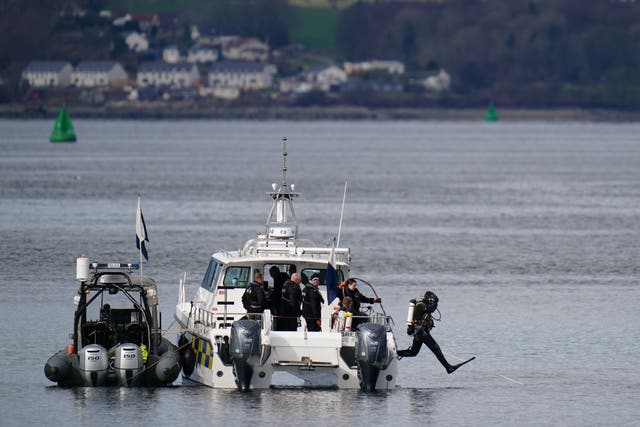Fatal tug capsize came after ‘breakdown’ of safety systems, report finds
Master George Taft, 65, and deckhand Ian Catterson, 73 died in the incident off Greenock, Inverclyde, in February 2023.

A tug capsized in less than 10 seconds with the loss of two lives because of a “breakdown of the systems that should have kept them safe”, marine investigators have found.
The Biter capsized while towing the passenger vessel Hebridean Princess towards James Watt Dock in Greenock on February 24, 2023.
Tug master George Taft, 65 and deckhand Ian Catterson, 73, were unable to escape and their bodies were recovered from the vessel’s wheelhouse by Police Scotland divers the following day.
A Marine Accident Investigation Branch (MAIB) investigation found Biter was affected by “girting” forces and capsized because it was unable to reverse direction to operate directly astern of the passenger vessel before the tug’s weight came on to the towing bridle.

Investigators also found an open accommodation hatch compromised the tug’s watertight integrity and limited the crew’s chance of survival as it was highly unlikely any air was trapped in the wheelhouse when the vessel tipped over.
The MAIB investigation found the Clydeport marine pilot’s training had not prepared them to work with conventional tugs such as Biter.
It also found master/pilot and pilot/tug exchanges were incomplete and, with no shared understanding of the plan, the passenger vessel’s master and the tug masters were unable to challenge the pilot’s intentions.
Andrew Moll, chief inspector of marine accidents, said: “Tug Biter’s accident was another cruel lesson of how rapidly things can go dreadfully wrong.
“In less than 10 seconds the tug capsized, and two experienced seafarers lost their lives, because of a breakdown of the systems that should have kept them safe.
“Small conventional tugs remain an essential part of UK port operations. However, the vulnerabilities of these vessels must be understood by those that operate and control them.
“Harbour authorities, ship and tug masters, and pilots should collectively own this risk. Pilots and tug crews must be suitably trained and experienced for their roles, and they must share a detailed understanding of the towage plan before they start the job.
“Speed, which has an exponential effect on towing forces, must be carefully controlled and the lines correctly set.
“Everyone involved must then monitor the execution of the plan and, if needed, act to keep everyone safe.”
The investigation also found Hebridean Princess’s speed of 4.6 knots (kts) meant the load on Biter’s towlines was between two and five times more than it would have been at the recommended lower speed of 2-3kts.

The MAIB has recommended Clyde Marine Services Limited, the tug’s owners, review its safety management system and risk assessments to provide clear guidance on the rigging of the gob rope; the safe speed to conduct key manoeuvres, and that it adopts a recognised training scheme for its tug masters.
Recommendations have also been made to Clydeport Operations Limited to commission an independent review of its marine pilot training and to risk assess and review its pilot grade limits and tug matrix.
A spokesperson for Clyde Marine Services said: “We acknowledge the release of the Marine Accident Investigation Branch report. We will take time to review and consider it.
“Our thoughts remain with the families affected and Clyde Marine Services will continue to co-operate fully with ongoing official investigations.”
Jim McSporran, port director, Clydeport, said: “We note the findings from the MAIB report and will consider its recommendations in detail.
“Above all, our deepest sympathy goes to the families, friends and colleagues of the two men who died in this tragic incident.
“The health, safety and the welfare of our employees and the third parties we work with is, and always will be, our number one priority.”
The MAIB has also made recommendations to professional associations representing pilots, harbour masters, and tug owners to develop appropriate guidance on the safety issues raised in its report.





